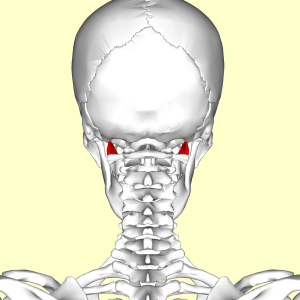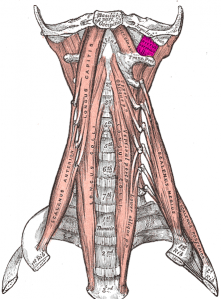Rectus Capitis Lateralis: Difference between revisions
mNo edit summary |
m (deleted pubmed and function heading) |
||
| Line 27: | Line 27: | ||
*Stabilizes the head<br> | *Stabilizes the head<br> | ||
*Weakly assists with lateral flexion of the head <ref>http://www.gpnotebook.co.uk/simplepage.cfm?ID=-1221263280</ref><br> | *Weakly assists with lateral flexion of the head <ref>http://www.gpnotebook.co.uk/simplepage.cfm?ID=-1221263280</ref><br><div class="researchbox"> | ||
<div class="researchbox"> | |||
</div> | </div> | ||
== References == | == References == | ||
Revision as of 17:25, 6 June 2018
Original Editor - Venus Pagare
Top Contributors - Venus Pagare, Admin, Tarina van der Stockt, WikiSysop, Kim Jackson and Manisha Shrestha
Description
[edit | edit source]
Origin
[edit | edit source]
Superior surfaces of the transverse processes of the atlas [1]
Insertion[edit | edit source]
Nerve Supply[edit | edit source]
Anterior primary rami of the first cervical spinal nerve (C1)
Blood Supply[edit | edit source]
Action[edit | edit source]
- Stabilizes the head
- Weakly assists with lateral flexion of the head [4]








